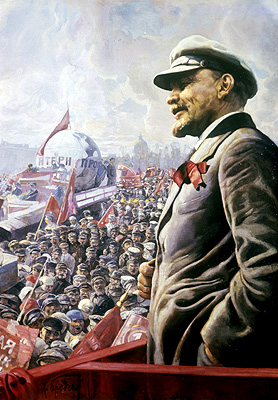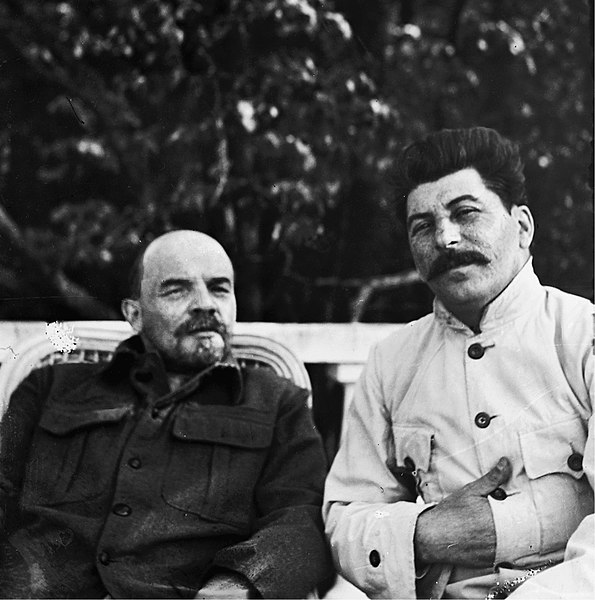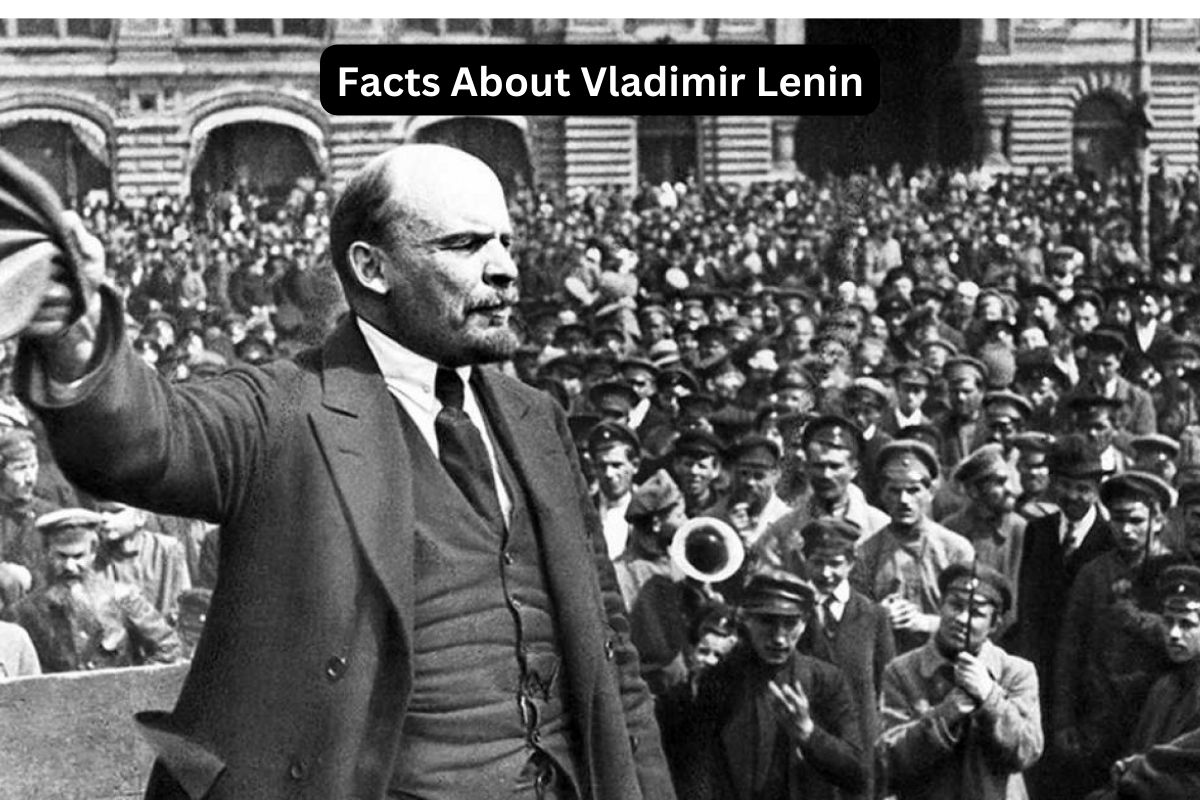Vladimir Lenin, a towering figure in 20th-century history, remains a subject of fascination and debate. As the leader of the Bolshevik faction and the architect of the Russian Revolution, Lenin’s influence reshaped the course of world politics.
In this article, we delve into some pivotal facts that illuminate Lenin’s life, from his early radicalization to his leadership during the Russian Civil War and the controversial legacy he left behind.
Through examining Lenin’s life and legacy, we gain insight into the complexities of revolutionary ideology, political power, and historical memory.
Vladimir Lenin Facts
1. Born on April 22, 1870, in Simbirsk, Russia
Vladimir Lenin, born on April 22, 1870, in Simbirsk, Russia, grew up in a politically charged environment. His family, particularly his elder brother Aleksandr, influenced his early political consciousness.
The execution of his brother for involvement in a plot to assassinate Tsar Alexander III deeply impacted Lenin’s views.
Also Read: Accomplishments of Vladimir Lenin
As he entered university, Lenin became increasingly radicalized, embracing Marxist ideology after being exposed to the writings of Karl Marx and Friedrich Engels. This ideological shift set the foundation for his future revolutionary activities.

2. Led the Bolshevik faction during the split of the Russian Social Democratic Labour Party in 1903
In 1903, Lenin played a pivotal role in the split of the Russian Social Democratic Labour Party (RSDLP) during its Second Congress in Brussels and London. The split occurred primarily over issues of party membership and organizational structure.
Also Read: Russian Civil War Timeline
Lenin led the faction known as the Bolsheviks, advocating for a tightly disciplined party consisting of professional revolutionaries.
The Bolsheviks, representing the more radical wing of the RSDLP, stood in opposition to the more moderate Menshevik faction, leading to a definitive split that would shape Russian revolutionary politics for years to come.
3. Led the October Revolution of 1917, establishing Soviet rule
Lenin’s leadership came to the forefront during the tumultuous events of 1917. Amidst widespread discontent with the Provisional Government and the ongoing World War I, Lenin orchestrated the Bolsheviks’ seizure of power during the October Revolution (November 1917, according to the modern calendar).
The Bolsheviks, with Lenin at the helm, stormed key government buildings in Petrograd (St. Petersburg), effectively overthrowing the Provisional Government and establishing Soviet rule.
Lenin’s vision of a socialist state guided the Bolsheviks’ actions, marking the beginning of the Bolsheviks’ ascent to power and Lenin’s central role in shaping the course of the Russian Revolution.
4. Became leader of the Russian Soviet Federative Socialist Republic (RSFSR)
Following the success of the October Revolution, Lenin emerged as the leader of the newly formed Russian Soviet Federative Socialist Republic (RSFSR). He assumed the position of Chairman of the Council of People’s Commissars (the head of government) and played a pivotal role in consolidating Bolshevik power.
Under Lenin’s leadership, the Soviet government embarked on a program of radical social and economic transformation, including the nationalization of industry and the redistribution of land to peasants.

5. Faced opposition during the Russian Civil War (1917-1922)
Lenin’s government faced significant challenges during the Russian Civil War, which lasted from 1917 to 1922. The Bolsheviks, known as the Reds, fought against various anti-Bolshevik forces, collectively known as the Whites, as well as foreign intervention from several Western powers.
Despite the immense difficulties posed by the civil war, including economic collapse and widespread famine, Lenin’s leadership and the Red Army’s military prowess ultimately secured victory for the Bolsheviks.
The Civil War cemented Lenin’s authority within the newly formed Soviet state, although it came at a high cost in terms of human lives and infrastructure.
6. Implemented the New Economic Policy (NEP) in 1921
In response to the economic devastation caused by the Civil War, Lenin implemented the New Economic Policy in 1921. The NEP marked a departure from the Bolsheviks’ earlier policies of wholesale nationalization and strict state control.
Instead, it introduced limited market reforms and allowed for some private enterprise in agriculture, retail trade, and small-scale industry. The NEP aimed to revive the economy, which had been severely disrupted by war communism, while maintaining Bolshevik political control.
Although the NEP succeeded in stabilizing the economy and alleviating some of the worst effects of the post-war crisis, it also generated tensions within the party over the direction of economic policy and the pace of socialist transformation.

7. Suffered health issues, including strokes, in the early 1920s
Lenin’s health began to deteriorate in the early 1920s, shortly after the end of the Civil War. In May 1922, he suffered the first of several strokes that left him partially paralyzed and significantly debilitated.
These health issues forced Lenin to withdraw from active participation in government affairs. Despite his declining health, Lenin remained politically influential, continuing to exert his authority within the Communist Party through written communications and occasional public appearances.
8. Died on January 21, 1924, at age 53
On January 21, 1924, Vladimir Lenin passed away at the age of 53. His death plunged the Soviet Union into a period of mourning, with millions of people across the country grieving the loss of their leader.
Lenin’s body was embalmed and placed on permanent display in a mausoleum in Red Square, Moscow, where it remains to this day. His funeral, held in Moscow, was attended by thousands of mourners, and his legacy was commemorated through numerous tributes and ceremonies.
9. His body is preserved and displayed in a mausoleum in Red Square, Moscow
Despite the collapse of the Soviet Union in 1991, Lenin’s mausoleum remains a symbol of Soviet history and a site of pilgrimage for some.
Despite periodic debates about the appropriateness of maintaining Lenin’s preserved body on public display, the mausoleum continues to attract visitors from around the world who wish to pay their respects to the revolutionary leader.
Additionally, Lenin’s ideas and writings continue to influence political movements and debates, with many still looking to his works for inspiration and guidance in the struggle for social justice and equality.
10. His legacy remains controversial, praised by some for establishing the first socialist state and criticized by others for authoritarianism
Lenin’s legacy is highly controversial and remains a subject of debate among historians, political analysts, and ordinary citizens. Supporters of Lenin praise his role in leading the October Revolution and establishing the world’s first socialist state.
They credit him with laying the groundwork for the creation of the Soviet Union and advancing the cause of socialism on a global scale. Critics, however, condemn Lenin for his authoritarian methods, including the suppression of political dissent and the establishment of a one-party state.
They argue that Lenin’s policies laid the foundation for the repressive regime that emerged under his successor, Joseph Stalin, leading to widespread human rights abuses and economic stagnation.
